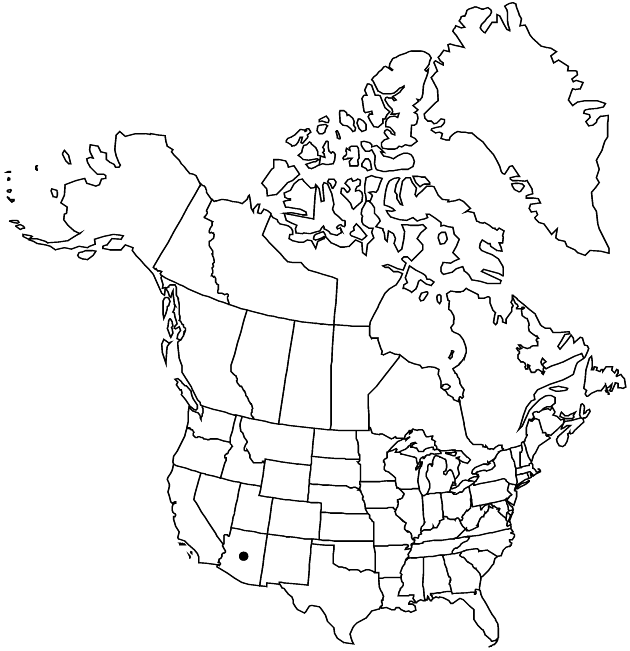Pectis rusbyi
in A. Gray et al., Syn. Fl. N. Amer. 1(2): 361. 1884.
Annuals, 5–50 cm (taprooted); herbage spicy-scented. Stems erect or ascending, glabrous or sparsely puberulent (in decurrent lines). Leaves linear to narrowly elliptic, 10–50 × 1–5 mm, margins with 1–3 pairs of setae, faces glabrous or sparsely puberulent (dotted on margins with round oil-glands 0.2–0.7 mm). Heads borne singly or in open, cymiform arrays. Peduncles 20–80 mm. Involucres campanulate. Phyllaries distinct, oblong or narrowly obovate, 4–7 × 1–2 mm (dotted with 0–2, subterminal oil-glands plus 2–4 pairs of inconspicuous, round to narrowly elliptic, submarginal oil-glands). Ray florets 8(–13); corollas 5–11 mm. Disc florets (7–)20–55; corollas 3.5–5 mm (2-lipped). Cypselae 3–4.5 mm, strigillose or short-pilose; ray pappi of 1–4, antrorsely barbed awns 1–4 mm or coroniform; disc pappi of 15–30, antrorsely barbed bristles 2.5–5 mm or coroniform. 2n = 24 (as P. palmeri).
Phenology: Flowering Jul–Oct.
Habitat: Deserts, desert grasslands, arid scrub, dry woodlands
Elevation: 600–1600 m
Distribution

Ariz., Mexico (Baja California Sur, Sinaloa, Sonora).
Discussion
Pectis rusbyi is much less common in Arizona than P. papposa var. papposa, with which it sometimes grows.
Selected References
None.